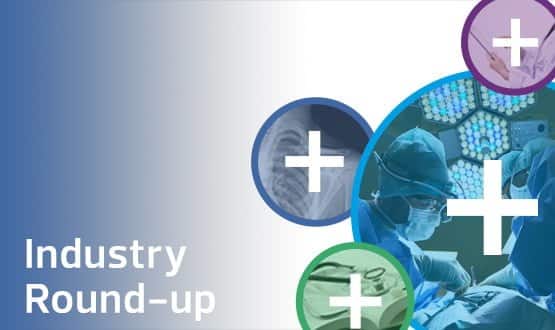Making IT ‘appen
- 6 January 2013

When the iPhone was released in 2007, Haidar Samiei thought to himself: “This is going to change everything.”
He joined forces with fellow trainee medic Brad Wilson – now an emergency department consultant at Bradford Teaching Hospitals NHS Foundation Trust – to build tools for the new device, and then recruited a coder and graphic designer.
From a rather unruly office at Leeds General Infirmary, Samiei describes how the first thing the new team worked on was a drug dosage application for children.
At the moment, working out paediatric dosages requires doctors to perform a set of calculations – usually on the back of a piece of paper – that turn adult measures into children’s measures, based on estimates of things like a child’s weight.
This is open to huge variations and contributes to the known 26% error rate in emergency paediatric prescribing. “It’s a big problem, so we thought ‘how do we go about fixing it?’” Samiei says.
The answer turned out to be an app called Paeds ED. Clinicians input some basic information about the patient and the app does all the calculations and recommends how much to prescribe. It has been downloaded more than 500,000 times in 113 countries.
Using funding from a Technology Strategy Board award, the team is now working hard on an international version – Paeds ED2 – which will take international variations in the availability and recommended dosages of drugs into account.
Users will be able to customise the app with information from their local medicines formulary.
The new app will also allow clinicians across the UK to see what drugs and dosages other clinicians are using, as these can vary between hospitals on different sides of town.
Samiei estimates that he and Wilson each spend about 20 hours a week on what has become a massive project.
“We are very busy people, but we have got a lot of enthusiasm and fantastic skills. We get a fair amount of stuff out there.”
Bullshingo is born
While Samiei immediately recognised the potential of the iPhone, he says few of the people he was working with thought it would take off. In the early days, his team received little or no support or funding from the NHS.
When the app development became a huge success, however, their employers suddenly starting claiming ownership of the intellectual property.
The clinicians argued that the IP is the code – and their coder does not work for the NHS. But they still found themselves tied up in interminable meetings.
Eventually, they became so exasperated that they invented a new game based on time-wasting meetings called Bullshingo.
Features include a counter that adds up the cost of the meeting according to the pay-scale of those attending, and a scorer on which points can be won by inserting song titles into the conversation.
When they asked the NHS if it also owned the IP of Bullshingo, the team’s problems seemed to melt away; leaving it to get on with the creation of a paracetamol overdose app.
Just as with children’s dosage calculations, doctors currently work out how to treat someone who has overdosed on paracetamol using complex calculations that are open to error. The app, again, does the calculations for them.
Samiei and Wilson were then asked by a local primary care trust to build an application for GPs to assess fever.
It was developed, but unfortunately never deployed because of issues around medical device guidelines, but is still available on the app store.
Handover gets attention
Their most recent free application is a handover tool covering SBAR – situation background assessment response – called NHSbar.
Samiei says that handover within a hospital department tends not to happen in written form; yet nearly every doctor has an iPhone in their back pocket as they do their ward rounds.
The team has therefore created a website and app on which people can create a private health community, which other clinicians can apply to join. For example, ‘Leeds ED consultants’ has its own community and only members can see the notes that staff leave on the system.
Clinicians write a brief note about how their shift has gone, staff numbers and bed capacity. They can also highlight any issues, such as problems with a certain kind of tourniquet or referring to other departments.
Samiei says the electronic system means handovers are now being done on a daily basis and ongoing or common problems are no longer going unnoticed due to lack of communication.
Notes on specific issues are collated – via a search tool – for inter-department meetings, so clinicians can raise them and get them resolved. This also allows the hospital to look back at the state of the department on any particular day if a complaint is made.
The tool was only released two weeks before eHealth Insider visited Leeds, but numerous communities had already been formed.
NHSbar is being incorporated into a portal called My-ied – a dashboard for communities of care – which has ‘quick links’ to important resources, a ‘rule book’ of local protocols and a search system for internal phone numbers called ‘quick call’.
A ‘share the love’ tool allows clinicians to share guidelines between health organisations. The team is also in discussions with NICE about building individual apps to make its guidance easier to digest.
Managing expectations
While Samiei is happy to describe plenty of barriers to the team’s work, consent and confidentiality do not seem to have come up as big issues.
In fact, he describes the trust’s clinical governance team as “truly amazing”. “Instead of being obstructive they have said, ‘well isn’t it dangerous not to have that?’” he explains.
A tougher problem – and one that other and more traditional developers may recognise – is managing people’s expectations. “People like something, but say ‘this is good, but doesn’t let me do this, that or the other thing’,” he says.
And the team does still run into issues with funding and support. Samiei sees plenty of potential for My-ied, but at the moment it has little of either.
“We have great difficulty convincing people that this has education value – or any value really apart from the ownership of the IP, which everyone is really interested in.
“Every single product we have created we have gone to the NHS first for support, but the answer is always ‘we have no way of helping you.’ We have kind of hit a glass ceiling; we’re trying really hard to smash through it,” Samiei says.
“Every time we do something, we find that something comes from it. Creating something real and seeing something happen from it is incredibly important to us.”




